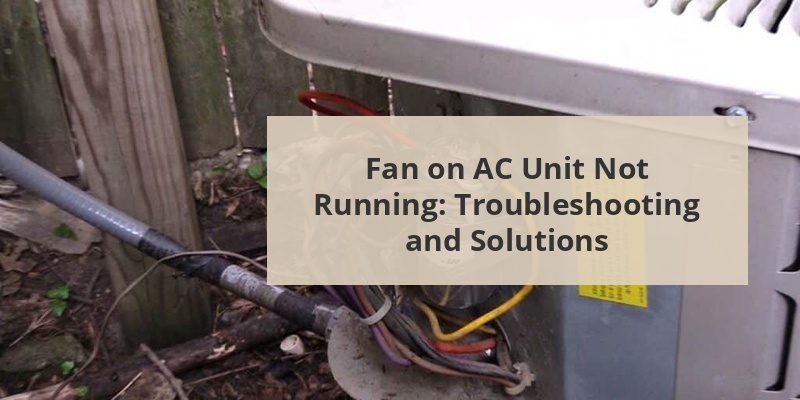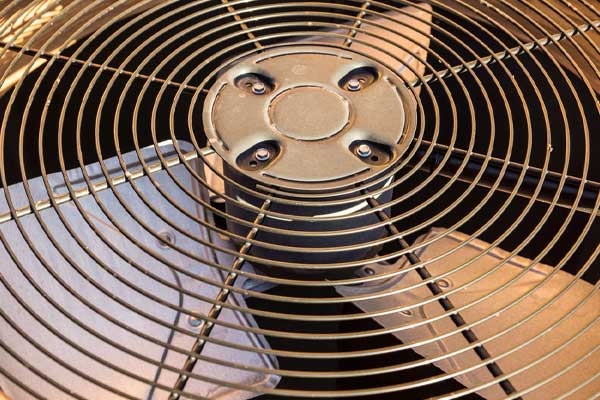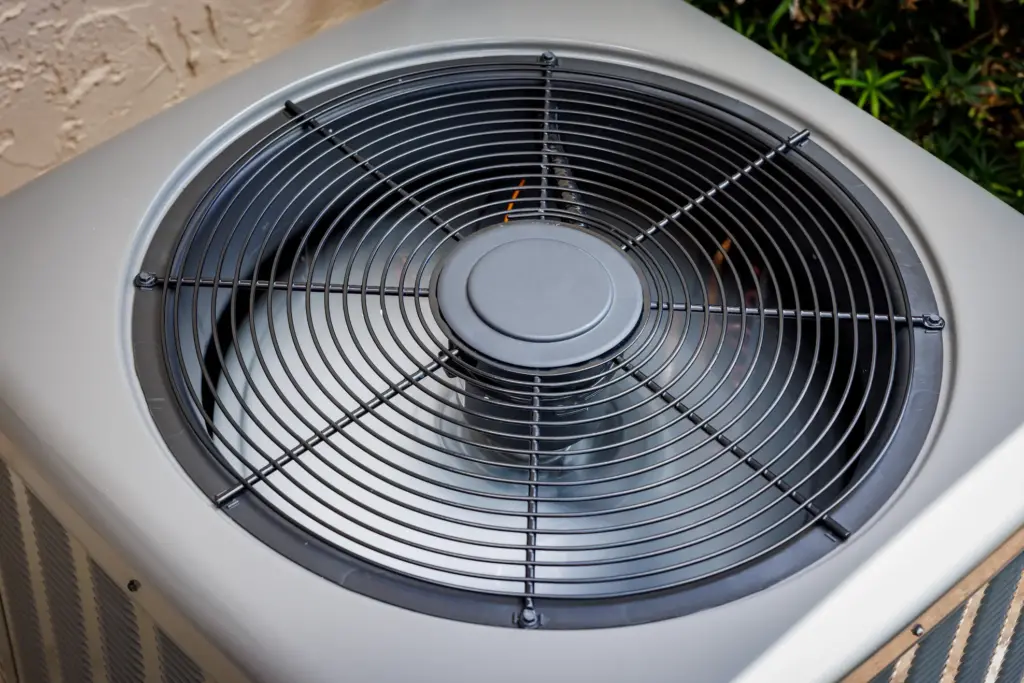Why Is The Fan On My Ac Unit Not Running

One of the most frustrating experiences for any homeowner, facility manager, or even seasoned HVAC technician is when the air conditioning system refuses to cooperate. While a completely dead AC is concerning, a situation where the indoor blower works but the outdoor fan on the condenser unit isn't spinning can be equally perplexing. This article dives deep into the reasons behind this common problem, offering insights applicable to residential, commercial, and industrial HVAC systems.
Understanding the AC System: A Quick Recap
Before troubleshooting, it’s crucial to understand the basics of how an air conditioning system functions. An AC unit comprises two main parts: the evaporator coil (usually inside the air handler) and the condenser unit (outdoors). The evaporator coil absorbs heat from your indoor air, cooling it down. The refrigerant, now hot, travels to the condenser unit. The condenser unit then releases this heat into the outside air, allowing the refrigerant to cool down and return to the evaporator to repeat the cycle. The outdoor fan plays a critical role in this process, drawing air across the condenser coil to facilitate efficient heat transfer. Without a functioning fan, the entire system suffers.
Common Causes of a Non-Spinning AC Fan
1. Power Issues
The simplest, and often overlooked, reason is a lack of power. Before diving into complex diagnostics, check the following:
- Breaker Tripped: Locate the circuit breaker for your AC unit in the electrical panel. A tripped breaker is a safety mechanism indicating an overload or short circuit. Reset the breaker. If it trips again immediately, do not keep resetting it – this indicates a more serious electrical problem requiring professional attention.
- Disconnect Switch: Many outdoor units have a disconnect switch located near the unit itself. Ensure this switch is in the "ON" position. Sometimes these switches can be inadvertently turned off during landscaping or maintenance.
- Loose Wiring: Over time, vibrations and temperature changes can loosen wiring connections. A loose wire at the condenser unit, the disconnect switch, or even inside the air handler can interrupt power to the fan motor. HVAC technicians often encounter this issue during routine maintenance.
2. Capacitor Problems
The capacitor is a critical component that provides the initial jolt of electricity needed to start the fan motor. It's like a battery that gives the motor a boost. If the capacitor is weak or failed, the fan motor may hum but not spin, or it may not do anything at all.
- Bad Capacitor: Capacitors are prone to failure, especially in hot climates. A bulging or leaking capacitor is a clear sign of a problem. Replacement is usually straightforward and relatively inexpensive. However, always disconnect power before handling capacitors, as they can store a dangerous electrical charge. It's best to leave this repair to a qualified technician.
3. Fan Motor Issues
The fan motor itself may be the culprit. Motors can fail due to age, overheating, or bearing failure.
- Worn Bearings: Bearings allow the fan motor to spin freely. Over time, these bearings can wear out, causing friction and preventing the fan from starting. You might hear a squealing or grinding noise before complete failure. Lubricating the bearings (if accessible) might provide a temporary fix, but replacement is generally recommended.
- Burned-Out Motor: The motor windings can burn out due to overheating or electrical surges. This is often accompanied by a burning smell. A multimeter can be used to test the motor windings for continuity to determine if they are burned out. Replacement is the only solution.
- Obstructions: Debris such as leaves, twigs, or even small animals can obstruct the fan blades, preventing them from spinning. Visually inspect the fan and remove any obstructions.
4. Contactor Problems
The contactor is an electrical switch that controls the flow of power to the condenser unit, including the fan motor. It's essentially a relay controlled by the thermostat.
- Faulty Contactor: A faulty contactor can prevent power from reaching the fan motor, even if the thermostat is calling for cooling. Signs of a bad contactor include buzzing, clicking, or visibly burned contacts. Replacement is necessary.
5. Overheating
If the condenser unit is overheating, a safety mechanism may shut down the fan to prevent further damage.
- Dirty Condenser Coils: Dirty coils restrict airflow, causing the unit to overheat. Regularly cleaning the coils with a garden hose (from the inside out) can help prevent this. Facility managers should include coil cleaning in their preventative maintenance schedule.
- Restricted Airflow: Ensure there is adequate clearance around the condenser unit (typically 2-3 feet). Shrubs, fences, or other obstructions can restrict airflow and cause overheating.
6. Low Refrigerant
While seemingly unrelated, low refrigerant can indirectly cause the fan to stop. If the system is significantly low on refrigerant, the compressor can overheat, triggering a safety switch that shuts down the entire unit, including the fan.
- Refrigerant Leak: Low refrigerant indicates a leak in the system. A professional HVAC technician is required to locate and repair the leak, and then recharge the system with the correct type and amount of refrigerant.
Troubleshooting Steps for Homeowners
Before calling a professional, homeowners can perform some basic troubleshooting steps, but always prioritize safety:
- Check the Thermostat: Ensure the thermostat is set to "COOL" and the fan is set to "AUTO." Verify that the set temperature is lower than the current room temperature.
- Inspect the Breaker and Disconnect Switch: As described above, check for tripped breakers and ensure the disconnect switch is in the "ON" position.
- Visually Inspect the Fan: Look for any obstructions preventing the fan from spinning.
- Listen for Unusual Noises: Listen for humming, buzzing, or clicking sounds, which can indicate a capacitor or contactor problem.
Important Safety Note: If you are not comfortable working with electricity, or if you suspect a serious electrical problem, contact a qualified HVAC technician. Working with high voltage can be dangerous.
When to Call a Professional
If you've checked the basics and the fan still isn't running, it's time to call a professional. Specific situations that warrant professional attention include:
- Suspected capacitor or contactor problems.
- Motor issues (burning smell, unusual noises).
- Refrigerant leaks.
- Electrical problems (repeatedly tripping breakers).
Preventative Maintenance: Avoiding Fan Problems
Regular preventative maintenance can significantly reduce the likelihood of fan-related problems. This includes:
- Annual Professional Inspection: Schedule an annual inspection by a qualified HVAC technician. They can identify potential problems before they lead to breakdowns.
- Coil Cleaning: Clean the condenser coils at least once a year, or more frequently in dusty environments.
- Filter Replacement: Replace the air filter regularly (typically every 1-3 months). A dirty filter restricts airflow, putting strain on the entire system.
- Clear Debris: Keep the area around the condenser unit clear of debris.
Cost Considerations
The cost of repairing a non-spinning AC fan can vary depending on the cause. A simple capacitor replacement might cost between $100 and $300, while a motor replacement can range from $300 to $800 or more. Refrigerant leaks can be significantly more expensive, depending on the location and severity of the leak. Preventative maintenance, while an upfront cost, can save money in the long run by preventing costly repairs and extending the lifespan of your AC system. Remember to consider the efficiency ratings of replacement parts; choosing a more efficient fan motor can lead to energy savings over time.
Conclusion
A non-spinning AC fan can be a sign of various problems, ranging from simple power issues to more complex component failures. By understanding the potential causes and following basic troubleshooting steps, homeowners and facility managers can often identify the problem and take appropriate action. However, when in doubt, it's always best to consult a qualified HVAC technician to ensure safe and effective repairs. Regular preventative maintenance is key to keeping your AC system running smoothly and efficiently for years to come.










